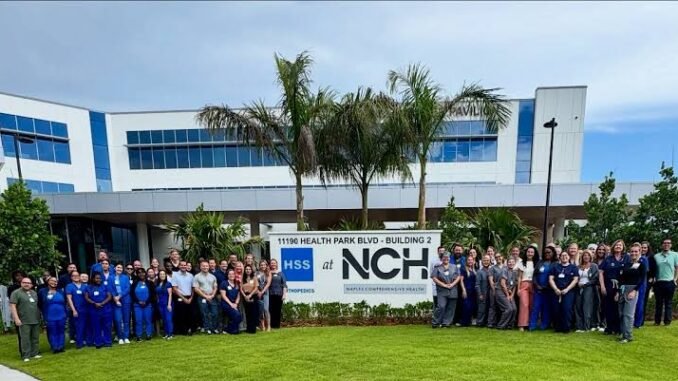
🏥 The Rangers & Hospital for Special Surgery: A Winning Partnership… read more…
In the high-stakes world of the National Hockey League (NHL), where every stride, shot, and shift counts, the health and performance of athletes cannot be left to chance. For the New York Rangers, one of the league’s most historic and high-profile franchises, ensuring elite medical care is a cornerstone of success. That’s where the Hospital for Special Surgery (HSS) enters the rink—literally and figuratively.
This partnership between the Rangers and HSS has not only improved the team’s health outcomes but has also created a model for integrating sports medicine with community outreach, research, and youth development. The collaboration is more than a sponsorship—it’s a comprehensive commitment to excellence in athlete health and wellbeing.
A Legacy of Excellence
Founded in 1863, the Hospital for Special Surgery is internationally recognized for its expertise in orthopedics and rheumatology. Located in Manhattan, HSS has served as the Official Hospital of the New York Rangers for years, bringing cutting-edge techniques, trusted specialists, and unparalleled recovery programs to the team.
For the Rangers, whose players endure some of the most physically grueling demands in professional sports, access to top-tier medical services is non-negotiable. The partnership allows HSS to provide both proactive care—focused on injury prevention and performance optimization—and reactive treatment, including surgeries and rehabilitation when injuries occur.
Behind the Bench: Medical Experts in Action
Among the leading figures in this partnership is Dr. Samuel Taylor, a highly regarded orthopedic surgeon at HSS who has worked closely with the Rangers’ medical staff. Taylor and other specialists attend to everything from ACL repairs and rotator cuff surgeries to advanced concussion protocols and post-game evaluations.
What sets this partnership apart is the seamless coordination between HSS physicians and the Rangers’ own team trainers and physical therapists. The relationship goes beyond treatment—it’s a 365-day-a-year integration of medical science and professional sport.
This was particularly evident in the case of defenseman Braden Schneider, who underwent shoulder surgery in April 2025. Schneider had been battling a torn labrum for nearly two seasons, managing to play through discomfort with the support of targeted therapy and close monitoring from HSS staff. When surgery became unavoidable, HSS provided a minimally invasive procedure that is expected to have him back in top shape for the 2025-2026 season.
Beyond the Pros: A Community Commitment
The impact of this partnership extends beyond Madison Square Garden and the Rangers locker room. HSS and the Rangers co-sponsor youth injury prevention workshops, community clinics, and sports health seminars throughout the New York metropolitan area.
Young athletes—from local high schools to junior leagues—benefit from the same expertise afforded to NHL stars. These initiatives are designed to educate athletes, parents, and coaches about proper training, injury warning signs, and long-term health practices. It’s a public health strategy disguised as sports development.
Moreover, HSS partners with the Garden of Dreams Foundation, a nonprofit associated with MSG and the Rangers, to provide free orthopedic evaluations and care to underprivileged youth—helping break down barriers to elite healthcare.
Education, Research, and Innovation
As part of its role in the partnership, HSS also collaborates on sports medicine research and innovation, often using insights gained from working with elite athletes like Rangers players. These studies range from ACL reconstruction efficiency to load management strategies, and findings are often shared in peer-reviewed journals and international conferences.
One key area of focus has been concussion research. HSS has pioneered enhanced neurocognitive assessments that the Rangers now use as part of their player baseline testing. These protocols allow team doctors to better determine return-to-play timelines, reducing risk of long-term brain trauma.
This research is not kept behind closed doors. HSS hosts public lectures, medical fellowships, and continuing education programs—ensuring that the knowledge gained through elite sports is passed along to the next generation of healthcare providers.
Integrated Care in Real Time
The NHL schedule is relentless: 82 regular season games, preseason, potential playoff runs, and international tournaments. For Rangers athletes, even a minor injury must be managed with precision. Through HSS, the team has access to on-call orthopedic surgeons, radiologists, physical therapists, and even nutritionists—all working in concert.
Real-time data from practices and games is fed into player wellness profiles. If a player shows signs of overuse or fatigue, the HSS team collaborates with coaches and trainers to adjust training loads or recommend rest. This data-driven approach not only prevents injuries but also maximizes performance at key moments in the season.
A Blueprint for the NHL and Beyond
The Rangers–HSS partnership stands as a blueprint for how professional sports franchises can integrate world-class medical care into every facet of their operations. It’s a symbiotic relationship: HSS elevates the Rangers’ ability to stay healthy and competitive, while the Rangers offer HSS a platform to further its research, training, and community outreach goals.
As the NHL becomes faster and more physically demanding, the need for this kind of partnership will only grow. Other franchises have taken notice, with many replicating the model in cities like Toronto, Boston, and Los Angeles.
Conclusion
At its core, the partnership between the New York Rangers and the Hospital for Special Surgery is about care, consistency, and collaboration. Whether it’s helping an NHL veteran return from injury, preparing a rookie for their first season, or teaching young players how to train safely, HSS plays a crucial role in every stage of an athlete’s journey.
In doing so, this alliance goes beyond wins and losses. It’s shaping the future of sports medicine, one shift at a time.
Leave a Reply